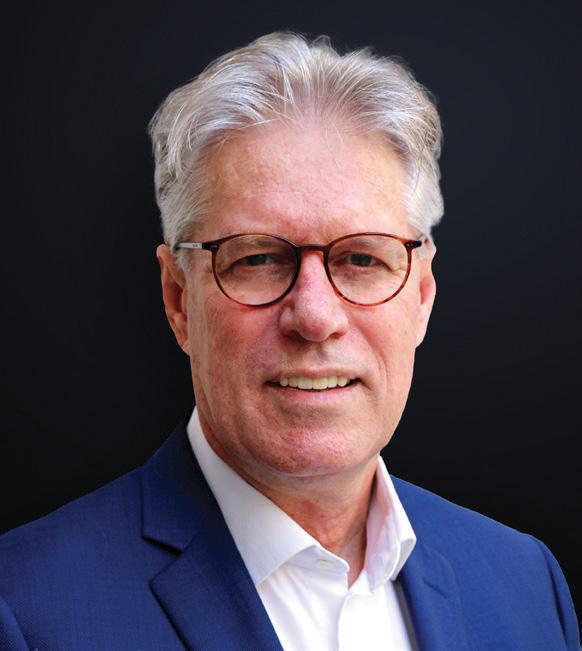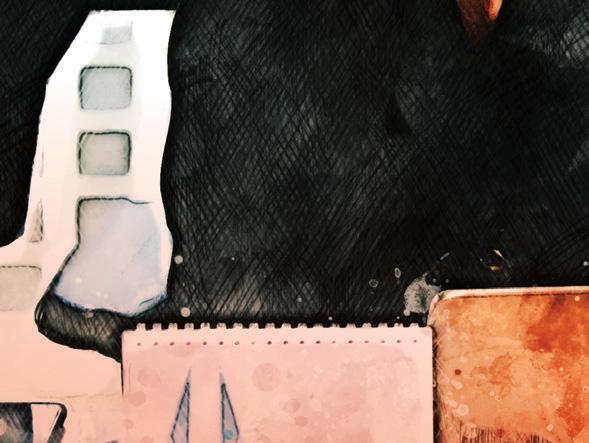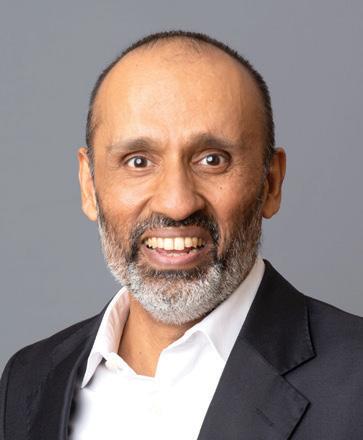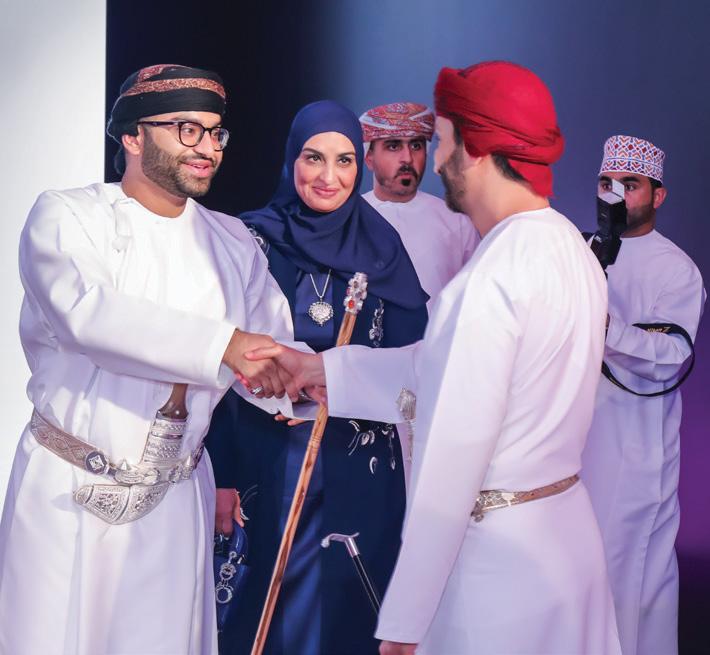



Everything you need to know


















Everything you need to know






























































Mohsin Hani Al-Bahrani shares the legacy driving MHD ACERE, one of Oman’s leading family businesses














LEADER VERSUS FOLLOWER Leader, follower, or somewhere in between? Find out where you fit in, and how best to navigate the playing field

Practical strategies for developing and maintaining meaningful relationships at the workplace
MORE AND MORE COMPANIES ARE APPOINTING SUSTAINABILITY LEADERS AND BUILDING DEDICATED TEAMS TO DRIVE THESE INITIATIVES. THEY’RE SETTING MEASURABLE TARGETS, LIKE NET-ZERO COMMITMENTS, AND TRACKING THEIR PROGRESS.”
STEPHEN ANDERSON , STRATEGY LEADER, PWC MIDDLE EAST
AGENCY SPECIALITY
NEW: Brand Experience Agency
Creative Agency
Digital Agency
Events, Experiential and Engagement Agency
Independent Agency of the Year
NEW: Independent Creative Agency of the Year
NEW: Independent Media Agency of the Year
NEW: Independent PR Agency of the Year
Influencer Marketing Agency
Integrated Marketing Agency Media Agency
Performance Marketing Agency
PR /Communications Agency
Production House of the Year
Social Media Agency of the Year
Start Up Agency
GEOGRAPHY
Best Agency – Egypt
Best Agency – Iraq
Best Agency – Jordan
Best Agency – Lebanon


Best Agency – Oman
Best Agency – Qatar
Best Agency – Saudi Arabia
Best Agency – UAE
PEOPLE, TEAMS & CULTURE
Account Person
Agency/Producer or Team
Arabic Copywriter of the Year
NEW: Best Place to Work
Corporate Comms & Marketing Team or Individual
Creative Leader
Creative Team
Head of Agency
Influencer Management Team
Investments /Trading /Media Buyer of the Year & Team of the Year
Outstanding Woman in Advertising
Strategy Leader
Strategic Planner & Strategic Planning Team of the Year
New Business Development Person of the Year & Team of the Year
Talent Management Individual & Team



Effective strategies to turn this challenging phase into an opportunity for growth and renewal
Niro Sivanathan, professor of organisational behaviour at London Business School, explains the dilution effect and shares tips to master negotiations

HEAD OFFICE: Media One Tower, Dubai Media City, PO Box 2331, Dubai, UAE, Tel: +971 4 427 3000, Fax: +971 4 428 2260, motivate@motivate.ae
DUBAI MEDIA CITY: SD 2-94, 2nd Floor, Building 2, Dubai, UAE, Tel: +971 4 390 3550, Fax: +971 4 390 4845
ABU DHABI: PO Box 43072, UAE, Tel: +971 2 677 2005, Fax: +971 2 677 0124, motivate-adh@motivate.ae
LONDON: Acre House, 11/15 William Road, London NW1 3ER, UK, motivateuk@motivate.ae
Cover: Freddie N Colinares
Editor-in-chief
Obaid Humaid Al Tayer
Managing partner and group editor Ian Fairservice
Chief commercial officer
Anthony Milne anthony@motivate.ae
Publisher Manish Chopra manish.chopra@motivate.ae
EDITORIAL
Group editor
Gareth van Zyl Gareth.Vanzyl@motivate.ae
Editor Neesha Salian neesha@motivate.ae
Digital editor
Marisha Singh marisha.singh@motivate.ae
Senior feature writer
Kudakwashe Muzoriwa Kudakwashe.Muzoriwa@motivate.ae
Senior art director
Freddie N. Colinares freddie@motivate.ae
PRODUCTION
General manager – production S Sunil Kumar
Production manager Binu Purandaran
Production supervisor Venita Pinto
& MARKETING
Senior sales manager Sangeetha J S Sangeetha.js@motivate.ae
Digital sales director
Mario Saaiby mario.saaiby@motivate.ae
Group marketing manager
Joelle AlBeaino joelle.albeaino@motivate.ae

IN THE RUSH TO SCALE, MANY BUSINESSES UNINTENTIONALLY OVERLOOK THE CRITICAL ASPECT OF FINANCIAL MANAGEMENT. HERE, WE DISCUSS THE SIGNS THAT INDICATE WHEN IT’S TIME TO BRING A CHIEF FINANCIAL OFFICER ON BOARD
o business owner intentionally neglects aspects of their company, yet in the rush to scale and capture market share, many inadvertently sideline one of the most important elements: financial management.
The spark that launches most companies rarely stems from a passion for accounting. A ter all most entrepreneurs are o ten driven by inspiration, not invoices.
But the laser focus on revenue generation o ten sidelines the broader financial oversight, which can be pivotal to long-term sustainability and success. In this context, the role of a chief financial o cer (CFO) is frequently underestimated and o ten seen as a luxury reserved for larger corporations.







Michal Sobieraj

CFOS ACT AS STRATEGIC AND OPERATIONAL ADVISORS WHO ADD SIGNIFICANT VALUE ACROSS THE ENTIRE ORGANISATION. WITH BUSINESS OPERATIONS BECOMING INCREASINGLY COMPLEX, THE SCOPE OF THE CFO’S RESPONSIBILITIES HAS EXPANDED ACCORDINGLY.
Yet, statistics reveal a stark reality: according to the US Bureau of Labor Statistics, over 20 per cent of businesses fail within the first year, often due to financial mismanagement, with that figure rising to 50 per cent within five years.
This highlights the importance of a CFO, both for managing daily finances and for steering companies through different stages of growth.
But what exactly does a CFO do, and how do you determine whether your company needs one?
A lot of people have a very narrow definition of what a CFO does, imagining that it’s purely transactional and just a case of ensuring bills are paid and balancing the books. But business practices have moved on and given today’s environment of global competition, increased regulation and economic uncertainty, a CFO’s role has evolved far beyond its traditional scope.
Now, CFOs act as strategic and operational advisors who add significant value across the entire organisation. With business operations becoming increasingly complex, the scope of the CFO’s responsibilities has expanded accordingly. Modern CFOs are now expected to oversee intricate financial systems, cultivate relationships with a diverse array of stakeholders, and lead effective change management.
This means as well as having expertise in finance, they also need also a strong capability in strategic planning and operational leadership.
In the vast majority of cases, the answer is yes. Certainly, if you’re serious about your company’s growth, a CFO is a non-negotiable. But that doesn’t necessarily mean that you need to hire on a full-time basis.
For small companies with fewer than 10 employees and generating less than Dhs3m per year, there probably isn’t any real need to use a CFO. Accounting requirements are fairly simple, and this basic financial management can be handled by existing staff or periodically through external services. That said, there is still significant value in having a CFO if the company is a particularly wellfunded, ambitious startup that wants to scale fast.
For most other companies, those with between 10 and 200 employees and revenue of Dhs3m to 200m, a CFO becomes a necessity. These SMEs are aiming to transition to the next level of growth and as such need guidance to manage their expansion, improve profitability, and navigate more complex financial obligations. However, in most cases a full time CFO is probably unnecessary. A fractional CFO can often provide the necessary support far more cost effectively and allows businesses to scale their financial oversight up or down as needed.
As companies grow beyond this point, into large enterprises with multiple divisions and complex operations, a full-time CFO is typically required to ensure cohesive financial strategies across all business units and maintain regulatory compliance. However, even in these larger organisations, a fractional CFO with the right expertise can add value, particularly in complex areas such as capital raising, the IPO process, or merger and acquisitions’ ctivities.
When your company starts facing more intricate financial and operational
challenges, it’s a strong indication that the expertise of a CFO might be necessary. There are usually a few telltale signs:
Strategic and financial planning: If your company is struggling with unclear strategies or has trouble executing plans, it could lead to financial instability. Signs like consistent financial losses or ongoing cash flow problems are clear indicators. Also, if you’re looking to raise new capital through equity or debt, or if you’re considering mergers and acquisitions, a CFO’s expertise in navigating these complex financial waters can be invaluable.
Revenue and cost management: A CFO really proves their worth when your company is at the stage that it needs to find new ways to make money or cut costs. This becomes particularly important when you’re starting new projects. These need close financial monitoring to make sure they’re not just exciting ideas, but financially sound and profitable ones. A CFO can help here with detailed feasibility studies and ROI analysis. By doing so, they ensure that every financial move you make aligns with and supports the broader health and objectives of your business.
Regulatory and compliance: As regulatory demands increase, staying compliant with both local and international tax laws is becoming more challenging, especially with the recent introduction of corporate tax in the UAE. A CFO can really make a di erence here, ensuring your company remains compliant and also preventing any costly financial missteps like inaccurate


tax filings or improper financial reporting, which might result in severe penalties and even harm your business’s reputation.
Reporting and decision-making: When critical financial and managerial reports are missing, it’s a clear sign that something is amiss. A CFO can address this by establishing robust reporting systems that deliver accurate and comprehensive data. These reports aren’t just a collection of numbers; they’re invaluable tools that help you make smarter, informed business decisions. With the right reports in hand, you can plan strategically for the long term, ensuring your business stays on the right path to success.
Operational efficiency and leadership: A CFO can also lead e orts to improve e ciency across various departments. This involves refining processes, setting relevant KPIs, and aligning the organisation towards common objectives.
This leadership is vital in driving broader organisational change and instilling a culture of innovation.
Deciding to bring a CFO into your team, either on fractional or fulltime basis is about more than just handling the money: it’s about having a strategic partner who can guide your company forward. A CFO brings a level of expertise that turns financial numbers into narratives that influence your company’s strategy and growth.
Whether you’re a startup needing to stay agile or an established firm looking to innovate, a CFO adapts to meet your business where it is – and helps take it where it needs to go.
So, if you’re wrestling with financial challenges, gearing up for growth, or facing new regulatory environments, it might be time to consider this crucial addition to your team. L
The writer is the CEO of Royal CFO.

LEADER, FOLLOWER, OR SOMEWHERE IN BETWEEN? FIND OUT WHAT DEFINES YOU BEST AND HOW TO NAVIGATE THE PLAYING FIELD
hether you’re a leader, a follower, or somewhere in between, understanding your position can unlock new levels of personal and professional success. It’s not about feeling unhappy that you’re in a particular category, it’s about understanding the complexity within these categories, embracing your role, leveraging your strengths, and navigating your career with confidence and clarity. Defining it for yourself is crucial when it comes to maximising your potential and achieving your goals.
But it’s not easy. In the media, we tend to see leaders who are exceptionally charismatic (and they’re often tyrants), while followers are portrayed as a faceless herd. Both of these generalisations can be misleading. There are many nuances when we look at ‘leader’, ‘follower',

LEADERSHIP IS NOT MERELY ABOUT HOLDING A TITLE, IT’S ABOUT EXERTING INFLUENCE AND INSPIRING OTHERS. MEANWHILE, A GOOD FOLLOWER IS NOT PASSIVE BUT ACTIVELY PARTICIPATES BY OFFERING CRITICAL FEEDBACK AND HELPING TO IMPLEMENT PLANS. IN OTHER WORDS, THEY ARE FAR FROM THE FACELESS SHEEP-LIKE FIGURES THE WORD ‘FOLLOWER’ CAN BRING TO MIND.
and ‘in-between’ personalities. And to be clear, there is no ‘wrong’ type – the key is to understand where you fall and then play to those strengths. It can be a game-changer in navigating your career.
Here, I will re-frame the definitions of leader and follower, why doing this work is so important, what you should do once you have figured out where you fit, and what experts and the latest studies say about questions around the leader/follower categories.
Let’s take a moment to redefine these terms for greater clarity. Leadership is not merely about holding a title, it’s about exerting influence and inspiring others. Meanwhile, a good follower is not passive but actively participates by offering critical feedback and helping implement plans. In other words, they are far from the faceless sheep-like figures the word ‘follower’ can bring to mind.
In the third category, many people find themselves leading in some situations and following in others. This is very common, and we shouldn’t underestimate the importance of this adaptability. One recent piece of research demonstrated this clearly. A YouGov study in the UK, involving almost 50,000 people, found that nearly 40 per cent felt they were primarily leaders, while around 25 per cent said they were followers. Importantly, 30 per cent said they fell somewhere in-between.
The Greek philosopher Aristotle said, “He who cannot be a good follower cannot be a good leader.” Pretty good advice. Today, most experts agree that both leaders and followers are essential for organisational success. In fact, according to leadership consultant Barbara Kellerman in the Harvard Business Review, it’s critical that the many types of followers are defined clearly and says this
can help managers ‘appreciate how their followers are different from one another.’ She argues that ‘followership’ is just as important as leadership.
Kellerman breaks down followers into five distinct types:
Isolates: Disengaged, they uphold the current state of affairs through their inaction.
Bystanders: Marginally detached, they act based on their self-interests, often without significant involvement.
Participants: Involved to the extent of dedicating some of their time and resources to influence outcomes.
Activists: Highly involved, deeply committed to individuals and processes, and keen to actively express their support or dissent.
Diehards: Intensely engaged, prepared to make ultimate sacrifices for their cause, even to the extent of taking drastic actions against leadership.
Meanwhile, the four most common leadership styles are:
Autocratic: Makes decisions without consulting others and maintains strict control over all aspects of the project or team, ensuring tasks are completed according to precise specifications.
Democratic: Involves team members in decision-making, values input and feedback from their team, and fosters a collaborative environment where everyone feels heard and valued.
Laissez-faire: Takes a hands-off approach, allowing team members to work independently and make their own decisions. Provides minimal guidance and lets the team take the lead.
Transformational: Inspires and motivates their team through a shared vision and enthusiasm. Focuses on personal and professional development, encouraging team members to exceed their own expectations.
By recognising where you fit on the spectrum and acting accordingly, you can make informed decisions that enhance your career trajectory and contribute to your overall wellbeing. Whether leading the charge or providing essential support, every role is valuable and pivotal in the grand scheme of organisational success. Let’s look at that in more detail now.
If you’re a new entrepreneur, it’s probably fair to say leadership responsibility sits entirely with you. If you’re in a larger business, you may be a leader at some points in the day and a follower in others. Identifying whether you are a leader, a follower, or somewhere in between is crucial for several reasons:
Career navigation: Understanding your natural inclination helps you find roles and environments where you can excel. Leaders may seek positions that allow them to guide projects and make strategic decisions, while followers might thrive in roles that emphasise strong support, detailed execution, and collaborative efforts.
Personal growth: Recognising your role can shape your personal development path. Leaders might concentrate on honing their strategic thinking, leadership, and communication skills. In contrast, followers could focus on enhancing their technical proficiency and teamwork capabilities.
Achieving results: Playing to your strengths enables you to maximise your contributions to your organisation and career. This alignment not only improves job performance but also increases job satisfaction, as you engage in work that suits your skills and interests.
THERE IS NO ‘WRONG’ TYPE – THE KEY IS TO UNDERSTAND WHERE YOU FALL AND THEN PLAY TO THOSE STRENGTHS. IT CAN BE A GAMECHANGER IN NAVIGATING YOUR CAREER.
Once you have figured out where you sit on this scale, the question is what to do next. This is all about playing to your strengths and continually working on your skills to maximise your talents.
IF YOU’RE A LEADER, focus on developing your leadership skills through training, mentorship, and practical experience. Seek feedback from your team and continuously work on improving your ability to inspire and guide others.
IF YOU’RE A FOLLOWER, enhance your ability to execute tasks efficiently and provide valuable support to your leaders. Build strong relationships with your colleagues and look for opportunities to contribute to team success.
IF YOU’RE IN BETWEEN, embrace your versatility. Identify when it’s appropriate to lead and when it’s best to follow. This balance can make you a crucial asset in any team.
We have seen how for anyone in business – whether an entrepreneur, SME owner, or an employee at a large organisation – identifying where you best fit in can pay dividends in the long term. The better you understand your strengths and how they play into your role, the more successful you have the potential to be.
I think it’s important to remember that every leader was once a follower, having proven their ability and authority through dedication and passion. Yet, being an effective leader in one area does not guarantee the ability to lead all work processes.
Everyone in a company has their own unique approach to tasks and problem-solving, meaning anyone can become a leader in a specific area if they are prepared to take on the responsibility. Understanding this is crucial, as it shapes how you influence and contribute to your organisation.
The writer is a marketing specialist.














WHILE THE MIDDLE EAST HOLDS SUBSTANTIAL OPPORTUNITIES MANY INTERNATIONAL COMPANIES STRUGGLE WITH MISCONCEPTIONS AND BIASES AT THE GLOBAL HQ LEVEL. HERE ARE FIVE STRATEGIC STEPS LEADERS CAN TAKE TO OVERCOME CHALLENGES, MAXIMISE INVESTMENT AND TAP THE REGION’S POTENTIAL

A ROBUST, NUMBERS-DRIVEN PROPOSAL IS THE CORNERSTONE OF SUCCESS. IT SHOULD COMPLY WITH PROCESSES AND INCLUDE A THOROUGH RISK ASSESSMENT AND A COMPELLING BUSINESS CASE. WORK WITH OTHER REGIONS IN THE COMPANY TO LEARN WHAT WORKS BEST FOR INFLUENCING GLOBAL DECISION-MAKERS.
Mirages often deceive the eye in the desert, promising water and relief where there is none. Similarly, the Middle East, at the moment, can appear daunting to global business leaders who mistakenly look at it as one homogeneous bloc. But unlike mirages, and despite geopolitical tensions in the broader region, the Gulf Cooperation Council economies’ potential is no illusion. A recent EMIR survey shows that 42 per cent of UAE-based regional CEOs expect double-digit growth in 2024, indicating a thriving business environment despite regional flux and a torpid global economy.
Yet, many regional leaders of international companies still struggle to unshackle themselves from misconceptions and biases held by a global HQ that often looks at the Middle East through a narrow keyhole. Global budget holders’ often misguided viewpoints can lead to missed opportunities and hinder growth.
With over a decade of experience advising regional business leaders in the Middle East, I’ve seen how critical it is to make the case for the region by focusing on these five simple steps.
Make the case with a comprehensive, data-backed proposal
A robust, numbers-driven proposal is the cornerstone of success. It should comply with processes and include a thorough risk assessment and a compelling business case. Work with other regions in the company to learn what works best for influencing global decision-makers. One UAE-based team, struggling with approvals, sought feedback from peers in a globally recognised office. This peer review revealed the need for detailed risk descriptions, which improved their success rate from 45 per cent to 80 per cent. Clear, precise and realistic proposals build confidence and pave the way for approval.
Engage experts early
Engaging legal, commercial, and technical experts early in the proposal process is crucial. These experts help

Kevin McKenna
lend credibility, anticipate potential issues, and provide essential guidance. Regional CEOs should foster a culture of early and proactive expert involvement, ensuring the groundwork for
42 PER CENT OF UAE-BASED REGIONAL CEOS expect double-digit growth in 2024, indicating a thriving business environment despite regional flux and a torpid global economy

success is laid well before the proposal reaches the decision-makers.
Craft a sophisticated internal lobbying campaign with critical decision-makers
Communication with key global decision-makers beyond the formal approval process is essential. This allows for a better understanding of concerns and aligns the proposal with the company’s strategic goals. Such proactive communication can pre-empt objections and smooth the path to approval. Internal lobbying should happen at multiple levels and be multifaceted.
INVOLVING LOCAL EXPERTS CAN BUILD TRUST AND PROVIDE EXTERNAL CONTEXT. CEOS SHOULD NOT HESITATE TO BRING TRUSTED ADVISORS TO CLARIFY THE BUSINESS LANDSCAPE. AGAIN, ARRANGING LOCAL VISITS FOR OFFSHORE EXECUTIVES TO MEET WITH LOCAL HIGH-CALIBRE EXPERTS CAN OFFER THEM FIRSTHAND INSIGHT INTO THE REGION’S VISION, OPPORTUNITIES, AND CHALLENGES.
Proactively tackle misperceptions and biases
Addressing and overcoming cultural biases and misconceptions is crucial. These often stem from outdated stereotypes and can obstruct investment plans. These biases can be addressed head-on by providing clear information, context, and market intelligence. Bringing global CEOs or critical decision-makers to the region is one of the most powerful ways to tackle misconceptions and dispel myths about doing business in the region.
Leverage local expertise
Involving local experts can build trust and provide external context. CEOs should not hesitate to bring trusted advisors to clarify the business landscape. Again, arranging local visits for offshore executives to meet with local high-calibre experts can offer them firsthand insight into the region’s vision, opportunities, and challenges. Another effective strategy is to have your visiting global CEO meet with other local regional CEOs over a roundtable discussion. This unbiased information gets them out of the silo of your organisation while corroborating the information in your proposal. Together, these five steps should focus on delivering a simple message to global budget holders: “This is a region of opportunity, so give us more budget. However, this place also operates very differently from our domestic market, so don’t expect the same linear pathways to growth and timelines.”
This strategy requires robust preparation, clear communication, a deep regional network and a rich understanding of the local business environment because, ultimately, you have to deliver on that promised growth. But it is worth it. By dispelling misconceptions and engaging proactively, regional CEOs can unlock the region’s true potential, transforming perceived mirages into an oasis of opportunities waiting to be discovered. L The author is the partner at















WE SHOWCASE FEMALE LEADERSHIP IN THE UAE, HIGHLIGHTING THE ACCOMPLISHMENTS OF EMIRATI AND EXPATRIATE WOMEN AND THE IMPORTANCE OF NURTURING THE NEXT GENERATION OF FEMALE LEADERS TO ENSURE CONTINUING PROGRESS
In recent years, the UAE has seen a notable increase in the number of women occupying high-profile roles as well as spearheading new companies. This trend marks a genuine shi t in a region traditionally characterised by male dominance in business and leadership. The numbers back this up.
The World Economic Forum’s 2023 Global Gender Gap Report places the UAE as a regional leader in boosting female leadership, while the WPS (Women Peace and Security) Index in 2023 ranked the UAE 22nd among 170 countries when it comes to women’s leadership in financial inclusion, political participation and justice.
So things are moving in the right direction, but there is still a long way to go globally – because let’s be clear, ensuring women are properly represented in leadership roles is not a UAE or even a GCC challenge alone. The global stats are concerning: In FTSE 100 companies we find that only 9 per cent of CEOs are women, while all-female startup teams received only a very small percentage of the total venture capital in 2023 (well below 2 per cent in most Western European countries). Yet, studies have shown that businesses with the highest percentage of female leadership outperform those with the lowest by a staggering
WPS Index in 2023 ranked the UAE 22ND AMONG 170 COUNTRIES when it comes to women’s leadership in financial inclusion, political participation and justice.
66 per cent. Here, I want to highlight the situation in the UAE, where it is now and how we can take it forward in the future, and I’ll argue that the business case for female leadership is so conclusive that all companies need to look at their own level of female representation in leadership roles if they really want to ensure they’re equipped for the future. So let’s get started with how we might define female leadership.
A common misconception is that everyone, regardless of gender, needs to lead in the same way. It has even sometimes been said that for a woman to be successful she needed to mirror male traits. The truth is more complex, with powerful women blending both female and male traits to forge their own path across every industry and the public sector.
Some of the key traits of female leadership include: Collaborative and inclusive leadership: One of the hallmarks of a female leadership style is a focus on collaboration and inclusivity. Female leaders are known for fostering teamwork and ensuring that diverse voices are heard. In fact, when women are in senior positions, the company in question is more likely to have a stronger overall Diversity, equity and inclusion (DEI) approach. This not only enhances workplace harmony but also drives innovation by integrating a wide range of ideas and perspectives.
Emotional intelligence and empathy: Another key aspect of this leadership model is the emphasis on emotional intelligence and empathy. Female leaders excel in understanding and managing their own emotions, as well as those of others.
This skill is invaluable in navigating the complex interpersonal dynamics of modern workplaces and ensuring em ployees are both loyal and motivated.
Balancing tradition and modernity: One specific quality that we see in the UAE is how female leaders can navigate the delicate balance between tradition and modernity, respecting cultural norms while advocating for progressive changes.
The UAE is brimming with remarkable individuals who have achieved success in their respective fields. Sheikha Hoor Al Qasimi stands out as a prominent figure in the art world as president of the Sharjah Art Foundation and the chairperson of the Sharjah Biennial.
Her visionary leadership has significantly contributed to the cultural landscape of Sharjah, elevating it to an international arts hub. Equally impressive is Khulood Al Dhaheri, who has made significant strides in the

A COMMON MISCONCEPTION IS THAT EVERYONE, REGARDLESS OF GENDER, NEEDS TO LEAD IN THE SAME WAY. IT HAS EVEN SOMETIMES BEEN SAID THAT FOR A WOMAN TO BE SUCCESSFUL SHE NEEDED TO MIRROR MALE TRAITS. THE TRUTH IS MORE COMPLEX, WITH POWERFUL WOMEN BLENDING BOTH FEMALE AND MALE TRAITS TO FORGE THEIR OWN PATH ACROSS EVERY INDUSTRY AND THE PUBLIC SECTOR.
judicial system by becoming the UAE’s first female judge, inspiring future generations to pursue careers in law and governance. In entertainment, Nayla Al Khaja has carved a niche for herself as a pioneering film director, with a unique cinematic vision that has garnered critical acclaim around the world.
On a different front, Major Mariam Al Mansouri has broken barriers to become a fighter pilot, her dedication and bravery serving as a powerful example of the progress being made towards gender equality in the UAE’s armed forces.
The UAE has also become a hub for accomplished expat professionals who














their qualifications and capabilities. Finally, providing assistance in integrating the responsibilities of caring for the family with the pressures of work can help women pursue and sustain leadership positions.











have achieved remarkable success in their respective industries. Rafiah Ibrahim, a UAE expat from Malaysia, ascended to the prestigious position of president of Market Area Middle East and Africa at Ericsson, her leadership and vision instrumental in driving the company’s growth and innovation across a very diverse region. Celine Bremaud, an expat from France, has made significant strides as the vice president for Microso t Middle East and Africa, her expertise and innovative approach crucial in advancing the tech giant’s influence in the region. Cynthia Corby, hailing from the UK, has established herself as a major figure in the finance sector as a partner at Deloitte in the UAE, her contribution pivotal in Deloitte’s success and reputation in the region.
From India, Shrimati Damal has made her mark as the CFO of UAE retail conglomerate Majid Al Futtaim, her financial acumen and strategic foresight helped steer the company towards sustained growth and profitability.
These examples – both Emirati and expat – demonstrate how far the UAE has come. But as I’ll discuss next, it’s also important to ensure the structures are in place for future generations of female leaders to come to the fore and to flourish.
The rise of female leaders in the UAE is something that needs to be carefully nurtured. The number of programmes and initiatives aimed at empowering young women are growing, including the Dubai Women Establishment, the UAE Gender Balance Council, and many more.
These and other initiatives are vital in providing visible examples of successful women in leadership positions so that aspiring female leaders can envision themselves in similar roles.
There also needs to be more work done around women accessing funding, networking, and support, all of which are crucial for career advancement. Unconscious and conscious biases also need to be addressed as they can result in women being overlooked for promotions and leadership roles despite

THE NUMBER OF WOMEN IN THE C-SUITE INCREASED FROM 17 PER CENT TO 28 PER CENT BETWEEN 2015 AND 2023. 2015
HerVoice Collective provides a sanctuary for women aspiring to lead, not in the conventional manner defined by hustle and masculine traits, but by tuning into their own voices – their innermost thoughts and the confidence that emanates from embracing their values. This ethos is further reinforced by practical strategies drawn from real-world wisdom, aimed at amplifying their narratives and messages. Trade License Zone forms the foundation of this venture, creating a nurturing environment for ambitious women. A woman’s power is in her energy, her intuition, her ability to awaken those around her just by her mere presence, as well as her ability to observe, listen and articulate. It’s through this she can become a true change maker. HerVoice is the community for this transition – to nurture the future or female leadership.
McKinsey reported that the number of women in the C-suite increased from 17 per cent to 28 per cent between 2015 and 2023. It’s an exciting improvement and a reminder of just how far we still have to go. While the empowerment of female leaders in the UAE is a testament to the nation’s commitment to gender equality and economic progress, it takes all of us to build and then ensure the stage is set for future generations of female leaders. By embracing collaboration, empathy and cultural balance, female leaders in the UAE can continue to carve out a new path – one that is better for business and society at large. L
The writer is the commercial director at Trade License Zone.
WE LOOK AT PRACTICAL STRATEGIES FOR DEVELOPING AND MAINTAINING MEANINGFUL RELATIONSHIPS AT THE WORKPLACE

uilding meaningful relationships at work is essential for creating a positive and productive environment. These relationships contribute to personal satisfaction, foster collaboration, and enhance job satisfaction. In today’s fast-paced corporate world, where trust and communication are often undermined by competition and misunderstandings, cultivating genuine connections is more important than ever. Here are practical strategies for developing and maintaining meaningful relationships in the workplace.
It all starts with open communication.
An amazing way of thinking about open communication is to be an ‘empty cup’. The philosophy is to approach every interaction as an ‘empty cup’. If your cup is full, no more can be poured in. A cup full of tea represents a mind full of preconceived notions, beliefs, and biases. To fill the cup with fresh tea, we must first empty it. In other words, you must discard pre-existing beliefs to make room for fresh ideas. With this approach, you would be able to communicate collaboratively.

The key to this is to listen actively. You listen to not just the words but take in the body language and the inflection of the voice. Listen with the intent of listening ‘not’ responding. With practice, this will become second nature, and you will begin to recognise the unique patterns in each individual’s speech.
Active listening is the second phase of open communication and is essential skill for any individual holding an executive position in the organisation.
Once we listen and understand, then comes your response. The most important thing about any response is clarity.
The response needs to be rounded, organised and should address every query or question or curiosity that has been posed and should be structured to ensure clarity and relevance. A mental structure is often helpful.
Here is one such structure:
01. Have I understood the question related to its context and specifics?
02. Is the question ambiguous and should I ask certain questions to clarify them?
03. Do I have enough information about the queries? If not, be honest.
04. Start with a direct answer to the question - then add additional details, explanations or even counter questions to make the answer comprehensive 05. Be open to feedback
Concepts of ‘sub modalities’ in interactive discussion:
Sub modalities in speech refer to the finer distinctions within the primary sensory modalities: visual, auditory, and kinesthetic. These sub modalities influence how we perceive and internally represent experiences, which are reflected in the specific words we use in everyday speech.
For example, someone might say: “I ‘see ’your point”, the sub modality is visual. On the other hand, when the person says, “I ‘hear’ you”, it’s auditory.
THE KEY TO THIS IS TO LISTEN ACTIVELY. YOU LISTEN TO NOT JUST THE WORDS BUT TAKE IN THE BODY LANGUAGE AND THE INFLECTION OF THE VOICE. LISTEN WITH THE INTENT OF LISTENING ‘NOT’ RESPONDING. WITH PRACTICE, THIS WILL BECOME SECOND NATURE, AND YOU WILL BEGIN TO RECOGNISE THE UNIQUE PATTERNS IN EACH INDIVIDUAL’S SPEECH.
The best responses are those that mirror the primary communication style of the person. Achieving this requires extensive practice and active listening.
Appreciation should be…
SINCERE: Genuine appreciation is more impactful than generic praise.
SPECIFIC: Highlight specific actions or results that you are thankful for.
TIMELY: Recognise efforts as soon as possible to maintain relevance and impact.
Appreciating the efforts of others is crucial for several reasons, both for individual and organisational wellbeing. A simple “thank you” or a note of appreciation can go a long way in making someone feel valued and respected. Celebrating achievements, both big and small is important for a number of reasons.
It is not just about courtesy. There are a number of reasons why appreciation is necessary.
It boosts morale which is a positive reinforcement, and this encourages positive behaviour and reinforces a culture of excellence. It also increases job satisfaction and are generally happier. People who appreciate others demonstrate leadership qualitiesempathy, emotional intelligence and strong leadership skills. It encourages innovation and creativity since new ideas are valued and explored. There is no judgement.
Renowned investor Warren Buffet put it another way: “It takes 20 years to build a reputation and five minutes to ruin it. If you think about that, you’ll do things differently.”
And philosopher Friedrich Nietzsche famously said this about trust: “I’m not upset that you lied to me. I’m upset that from now on I can’t believe you.”
One of the biggest reasons leaders need to focus on trust today is because by many measures, trust is on a serious decline. The annual Edelman Trust Barometer, which sampled 32,000 employees across 28 countries in 2024, found that trust has declined

significantly in companies headquartered in the largest exporting nations.
To be an e ective leader, it is essential to keep your promises by being dependable and consistent.
Learning how to build trust at work is crucial for success as a leader. O ten, the first step in building trust is establishing rapport. So, the main question is, what is trust?
Trust is a sense of security and confidence when we interact with our colleagues in the workplace.
It is the ability to predict their actions and earning a level of credibility that has been established over time.
Simply ask these questions from the above:
Do you feel secure in your workplace? If not, why?
Do you give your colleagues a sense of security when they interact with you? If not, what can you improve?
Are you credible? If not, what can you do?
Here are some of the ways we can gain trust.
01. BEING TRANSPARENT - in this case clarity of communication is important
02. KEEPING PROMISES - do not over promise
03. LISTEN and be genuinely concerned about the perspective of others
04. BE A STRONG EMOTIONAL SUPPORT - remember that organisations are made up of people and they have feelings
05. COMMUNICATE – Clearly and respectfully
06. BE CONSISTENT in your actions
07. ACKNOWLEDGE and respect boundaries
08. ENCOURAGE and praise when appropriate
EMPATHY
Empathy is ‘not’ sympathy. The term “empathy” is used to describe a wide range of experiences. Emotion researchers generally define empathy as the ability to sense other people’s emotions, coupled with the ability to imagine what someone else might be thinking or feeling. In other words, seeing the world through the other person’s eyes.
Let us look at a concept: You are a conglomeration of all the experiences you have had in life. Your experiences shape your responses to various stimuli, and everyone’s reactions are unique to them. This is
influenced by your surroundings –your friends, your family, what you hear, and what you read. For example, one person might view failure as a challenge, while another might give up. The philosophy of using positive language, such as saying ‘great’ instead of ‘good,’ ‘learning’ instead of ‘failure,’ or ‘searching’ instead of ‘lost,’ can significantly impact your mindset and resilience.
Therefore, the way to empathise is to study the other person and his or her responses to the world around. They would include both verbal and non-verbal responses.
And once we are empathetic, we automatically respect personal boundaries and professional limits. Respecting boundaries demonstrates professionalism and earns respect in return.
Building meaningful relationships requires dedication and e ort. Take the time to know your colleagues beyond just work interactions by engaging in casual conversations, sharing interests and hobbies, and participating in team-building activities. Forming personal connections outside of work enhances professional relationships and fosters a sense of camaraderie.
As a leader or senior team member, lead by example in cultivating meaningful relationships. Show positive communication, collaboration, and respect in your interactions, setting the tone for the team and shaping the workplace culture.
THEREFORE, THE WAY TO EMPATHISE IS TO STUDY THE OTHER PERSON AND HIS OR HER RESPONSES TO THE WORLD AROUND.
Additionally, regularly seek feedback from your colleagues on how you can improve your relationships and communication. Be open to constructive criticism and use it as an opportunity for growth and development. Asking for feedback demonstrates that you value your colleagues’ input and are committed to strengthening your relationships with them. L
The Australia-based writer is a consultant in behavioural studies and a seasoned corporate trainer.














EXPERIENCING A MID-CAREER CRISIS? HERE ARE PRACTICAL STRATEGIES TO TURN THIS CHALLENGING PHASE INTO AN OPPORTUNITY FOR GROWTH AND RENEWAL
You’ve probably heard of the mid-life crisis, but what about the midcareer crisis? It’s the career version of the mid-life crisis. As an executive coach, I see this frequently among my clients, and I experienced it myself just before I turned 40. The insights below are based on hardearned experience.
By the time they reach their late 30s or early 40s, many professionals have had relatively successful careers. Typically, they:
Have received three-four promotions, Earn a decent salary and have accumulated reasonable wealth,
Are respected members of their profession, Have managed large teams, and Are competent in the technical aspects of their job.
However, the flip side is that they o ten:
Feel that work has become routine and boring, with little new to learn,
Feel unrewarded at work, with limited opportunities for promotion,
Notice an increase in workplace politics as they climb the ladder, now dealing with both performance and politics,
Have a “network” that is small and limited to people in the same industry and location, making them relatively unknown outside this group,
Have toyed with the idea of entrepreneurship for years but are unsure how to proceed, and Start to feel that their life lacks purpose or meaning.
For three reasons:
01. They have been diligently following societal expectations – from school to college
to marriage to career – without truly living their own values. They opted for the easy path by borrowing values from society, and now they realise they are living a lie.
02. They lack self-awareness due to their focus on external achievements — career, title, wealth, cars, houses, family, travel, etc. This means they don’t truly know themselves — their beliefs, values, traits, skills, etc.
03. Many believe that what got them here will get them there. There’s too much emphasis on technical skills and exam-focused education, neglecting soft skills. Predictably, they have hit a ceiling in their careers.
Here are some potential solutions:
01. Learn from those older than you—relatives, colleagues, mentors, coaches – who have already navigated this tough phase and emerged with fewer regrets. Don’t reinvent the wheel.
02. This can be a chance to become self-aware, introspect, and reevaluate your values, behaviours, preferences, strengths, and weaknesses. It’s quite exciting when seen from that perspective. It’s like a second chance.
03. But how do you gain self-awareness? Get honest feedback, reflect on your greatest joys and disappointments, and think about people you admire. This will help you grasp who you really are and what you want.
04. Work on your soft skills and personal brand. Connect with the right networks, form an informed view of how the world works, and develop a presence on LinkedIn or other platforms. You may find satisfaction in becoming a thought leader and getting invited to mentor, speak, etc.
05. Perhaps it’s time to stop viewing work as the biggest source of achievement. Maybe now you can measure your worth by how you

help others, contribute to the community, or grow as a person, both mentally (e.g., self-awareness and calm) and physically (e.g., eating healthier, training hard, and achieving a fit body).
06. Start enjoying the relationships you’ve been developing over many years: friends, students, clients, colleagues, mentors and mentees.
07. Examine how much you’ve been living a life to please or impress others, and as a result, how much you’ve ignored your authentic self. Think about the ticking clock and your inevitable expiry date. Perhaps then, you will finally gain the courage to live your values, which could also mean developing the courage to be disliked.
WORK ON YOUR SOFT SKILLS AND PERSONAL BRAND.
CONNECT WITH THE RIGHT NETWORKS, FORM AN INFORMED VIEW OF HOW THE WORLD WORKS, AND DEVELOP A PRESENCE ON LINKEDIN.
WHEN YOU FEEL DOWN, PULL OUT YOUR “BOOK OF BLESSINGS” AND FEEL GRATEFUL. THAT “ATTITUDE OF GRATITUDE” (A CHEESY PHRASE BUT ACCURATE) WILL BOOST YOUR SENSE OF SATISFACTION.
08. Count your blessings. There are always aspects of your life that are relatively good, but you may have overlooked them because you were constantly comparing yourself to others or your own expectations. So, when you feel down, pull out your “Book of Blessings” and feel grateful. That “attitude of gratitude” (a cheesy phrase but accurate) will boost your sense of satisfaction.
It’s not just good but important to acknowledge mid-career dissatisfaction as a normal and temporary stage in your work life. This provides a sort of light at the end of the tunnel when you feel there’s no hope. Many people I know haven’t changed materially after experiencing a midcareer crisis. That’s because they’re in their comfort zones, feel it’s too tough to change, are too set in their ways, and have tried to get unstuck on their own. But as they say, nothing valuable is easy. And a crisis can be an opportunity. L
The writer is an executive coach, keynote speaker, and author of Let’s Get Real: 42 Tips for the Stuck Manager.































MOHSIN HANI AL-BAHRANI, CEO OF MHD ACERE, CREDITS HIS GRANDFATHER, THE LATE MOHSIN HAIDER DARWISH, WITH HAVING A LONG-TERM VISION THAT LAID THE FOUNDATION FOR ONE OF THE LEADING FAMILY BUSINESSES IN THE GCC REGION



Afamily business’s rich legacy is more than just the value of its portfolio; various elements of its legacy contribute to the business’s performance and its ability to maintain an entrepreneurial spirit across generations.
“Inspired by my late grandfather, Mohsin Haider Darwish, I have dedicated my career to upholding his vision for Mohsin Haider Darwish (MHD). My lifelong passion for automobiles has been the driving force behind this journey,” says Mohsin Hani Al-Bahrani, CEO of MHD’s Automotive, Construction Equipment, and Renewable Energy (ACERE) cluster.
“My grandfather founded MHD in 1974, laying the groundwork for our family business. Since then, the company has experienced exponential growth, solidifying its position as one of the most successful privately owned conglomerates in Oman,” Al-Bahrani shares in honour of his grandfather’s entrepreneurial legacy.
Since its establishment as a corporate entity in 1987, MHD has been a significant contributor to Oman’s economy. The company has consistently demonstrated impressive growth and
diversification, reflecting a commitment to progress and development.
“My grandfather was a visionary entrepreneur who understood that business success should be aligned with societal progress,” Al-Bahrani says. “Even when he founded MHD over fifty years ago, he envisioned the company’s growth as intertwined with Oman’s development.
Family businesses are a vital part of GCC economies. As the majority of family-owned businesses are evolving into multinational conglomerates with diverse portfolios, these enterprising families are the engines of economic growth and a driving force behind National Visions such as Oman Vision 2040.
Al-Bahrani’s growth strategy for MHD ACERE is centred on diversification and expansion. He has successfully launched new business ventures such as MHD Leasing, which serves Oman’s tourism sector,
MY GOAL WAS TO TRANSFORM MHD INTO A LEADING AUTOMOTIVE DEALER NOT ONLY IN OMAN BUT THE ENTIRE GCC REGION . WE EXPANDED OUR OFFERINGS BEYOND LUXURY VEHICLES TO INCLUDE MORE AFFORDABLE OPTIONS, RECOGNISING THE SIGNIFICANT GROWTH POTENTIAL IN THIS SEGMENT.”
and HospiCare, a healthcare division that supports the nation’s health and wellbeing.
Driven by a desire to carry on his grandfather’s legacy and live up to the vision he had for the family business, Al-Bahrani has attracted world-class automotive brands such as Jaguar Land Rover (JLR) to Oman while expanding the company’s sales network throughout the sultanate.
Al-Bahrani has led MHD ACERE for the past four years. He joined the group as the director of automotive division before he was promoted as CEO in 2020 to lead the conglomerate’s automotive, construction equipment, and renewable energy departments.
“A ter completing my Master’s degree in the UK, I joined MHD and immediately immersed myself in the automotive industry. My previous summer internships with prestigious brands like Jaguar and Land Rover provided me with valuable hands-on experience,” Al-Bahrani recalls.
With a commitment to delivering superior products and services, MHD ACERE was created by merging MHD’s automotive, construction equipment, and renewable energy departments under one umbrella, positioning us for continued growth and success.
Over the years, MHD ACERE has grown to become a leading automotive dealer in Oman. It represents more than ten brands and o ers comprehensive pre- and a ter-sales services, marketing support, and a wide-ranging showroom network.
Al-Bahrani has been instrumental in diversifying and expanding MHD, bringing new brands to Oman, including Stellantis’ Jeep, Dodge, RAM, and Alfa Romeo, as well as Jetour, Hongqi, Ineos Automotive, Varta batteries, XCMG, and Weir Trio.
“My goal was to transform MHD into a leading automotive dealer not only in Oman but the entire GCC region. We expanded our o erings beyond luxury vehicles to include more a ordable options, recognising the significant growth potential in this segment,” says a proud Al-Bahrani.
The expansion of MHD’s o ering has proven to be a winning strategy. MG Motors in Oman is a testament to this, having experienced a meteoric rise from the 15th to the third position in local
sales volume behind Toyota and Nissan, according to the Middle East Automotive Council (MEAC) report. This growth was underpinned by a remarkable 520 per cent increase in sales in 2019.
MHD’s exceptional performance in sales, a ter-sales services, marketing, and network development for MG Motors earned the company the prestigious Grand Prix 5 Star Distributor Award at the Virtual Dealer Awards hosted by SAIC Motor and MG Middle East.
Similarly, the creation of the ACERE vertical allowed Al-Bahrani to lay the foundation for the future of the family-owned business. “We have launched a renewable energy division, introducing the ABB brand of chargers for electric cars, solar panels, construction equipment, and di erent sustainable solutions that are aligned with the goals of the Oman Vision 2040,” he adds.
Al-Bahrani has been implementing strategies to ensure resilience in the face of economic challenges, including those brought on by the Covid-19 crisis. “The pandemic had a profound impact on global health and economies, including Oman. As a result, MHD’s growth was temporarily a ected, mirroring the challenges faced by other automotive businesses,” he adds.
However, an enterprising Al-Bahrani stresses that the group maintained a positive outlook and sought to identify new opportunities amidst adversity, hence the integration of various MHD verticals to streamline operations under ACERE.
15TH
THE EXPANSION OF MHD’S OFFERING HAS PROVEN TO BE A WINNING STRATEGY. MG MOTORS IN OMAN IS A TESTAMENT TO THIS, HAVING EXPERIENCED A METEORIC RISE FROM THE 15TH TO THE THIRD POSITION IN LOCAL SALES VOLUME
He explains that the lessons learned from challenging economic times have proven essential for the company’s future progress.
Quizzed about core values and principles that have driven the success of MHD, AlBahrani says, “Our company is dedicated to contributing to our nation’s progress by identifying and pursuing new business opportunities inspired by the innovative thinking of the next generation.”
Al-Bahrani’s leadership has propelled MHD to a leading position in the automotive, ancillary, and construction equipment industries as the conglomerate remains committed to sustainable growth and diversification.
Al-Bahrani’s leadership has been instrumental





















































































VENTURING INTO CAR RENTAL AND LEASING AND HEALTHCARE VERTICALS WAS A STRATEGIC MOVE FOR US. WE LEVERAGED OUR EXISTING RELATIONSHIPS TO DIVERSIFY OUR HEALTHCARE BUSINESS. THIS INCLUDED PARTNERING WITH TOP GLOBAL BRANDS IN THE MEDICAL SECTOR.”





repair meshes and double pump RF from Insightra Medical.
Together with the car rental and healthcare divisions, Al-Bahrani also spearheaded the launch of MHD’s renewable energy division. The division o ers sustainable solutions, including ABB brand electric car chargers, solar panels, and construction equipment, aligning with the goals of Oman’s Vision 2040.
in MHD’s diversification and expansion – a strategic vision that is positioning the group for sustainable growth. MHD ACERE continues to evolve and innovate, capitalising on the company’s automotive experience and pursuing new ventures.
The growth mindset stems from Al-Bahrani’s strategy for leading the conglomerate, which rests upon the belief that the role of a CEO goes beyond administrating a company’s overall operations. He explains that establishing ventures such as MHD Leasing and MHD ACERE’s HospiCare has enhanced his strategic planning abilities.
“Venturing into car rental and leasing and healthcare verticals was a strategic move for us. We leveraged our existing relationships to diversify our healthcare business. This included partnering with top global brands in the medical sector,” says Al-Bahrani.
“MHD Leasing was established to capitalise on the growing rental and leasing market in Oman. By focusing on the tourism sector, a key component of Vision 2040, we aim to support the country’s economic development.”
The group’s new HospiCare division will o er a comprehensive range of medical equipment to top healthcare organisations in Oman. This includes surgical equipment from Spark Meditech, emergency devices from Comen, communication systems from Schrack Seconet, ultrasound devices from FUJIFILM Sonosite, and specialised products such as IAB catheters, hernia
“MHD’s foray into renewable energy and electric vehicles was a groundbreaking move for both the company and Oman. Partnering with ABB, a leading technology company, to supply high-power electric vehicle chargers was crucial for raising awareness about e-mobility in the sultanate,” says Al-Bahrani.
He is also actively working to establish MHD as a leader in sustainable and green solutions in Oman as e-mobility continues to grow worldwide.
FAMILY BUSINESSES ARE MAKING SIGNIFICANT STRIDES IN SUPPORTING OMAN’S ECONOMIC DIVERSIFICATION, WHICH WILL CONTRIBUTE TO ACHIEVING THE OBJECTIVES OF VISION 2040

Al-Bahrani emphasises that each role he has held in the past has added depth to his perspective, from guiding middle management teams to orchestrating revenue expansion through diversification of product lines.
He believes that strong leadership and a strategic vision are fundamental to driving success in the automotive industry.
“To foster employee motivation and development, we’ve strengthened our internal recognition programs and implemented leadership development initiatives designed to enhance managerial skills and support team performance,” says Al-Bahrani.
Al-Bahrani’s leadership, grounded in the MHD’s legacy and core values of transparency and teamwork, has been pivotal in driving the group to its current industry stature. “At MHD ACERE, every employee is a valuable asset of our company and an integral part of the company’s ideation and decision-making process,” he says.
A scion of one of the GCC region’s biggest family-owned businesses, Al-Bahrani is driving MHD’s diversification into new sectors such as car leasing and renewable energy. The strategy aligns well with Oman’s goal of a sustainable, multifaceted economy driven by the private sector.
Family businesses are making significant strides in supporting Oman’s economic diversification, which will contribute to achieving the objectives of Vision 2040.
“Oman’s promising business environment, characterised by its robust infrastructure and abundant opportunities, can be further enhanced by empowering and supporting the private sector. Government incentives and regulations are essential for fostering a more competitive and e cient private sector, which can drive socio-economic development,” Al-Bahrani says while noting that the sultanate’s political stability and strong safety record make it a highly attractive business hub.
“Family businesses must adapt to changing circumstances and be open to new ideas to thrive in today’s business landscape. Maintaining authenticity and exploring unconventional approaches can give family businesses a competitive edge over those constrained by rigid plans.”
Al-Bahrani is confident that MHD ACERE will play a pivotal role in achieving Vision 2040 and driving a sustainable and diversified economy led by the private sector. “At MHD ACERE, we are committed to supporting Oman’s economic reform agenda, which seeks to diversify the economy beyond oil. The automotive sector is a key part of this strategy, with increased investments in infrastructure and industry to drive growth.”
Over the years, Oman has been actively promoting Omanisation, a longstanding policy aimed at creating jobs for Omani citizens and diversifying the economy beyond oil.
“Omanisation has been a priority for me since taking over at MHD ACERE. I have focused on implementing measures to increase the number of Omani employees within our group,” Al-Bahrani.
“Between 2019 and 2021, we successfully increased the Omanisation ratio within our cluster from 32 per cent to 65 per cent. This achievement is especially significant given the challenges posed by the pandemic, which adversely a ected the job market.”
Since Al-Bahrani took the helm, MHD ACERE has broken new ground in the business world. The company has made a significant impact on Oman’s economy, with notable achievements in transportation, communication, infrastructure, and healthcare.
Going forward, Al-Bahrani envisions MHD as a leading force in the automotive industry, known for its commitment to excellence, sustainability and customer satisfaction. He intends to further diversify the group’s o erings by adding more world-class automotive brands to its portfolio. L
BETWEEN 2019 AND 2021,




MORE THAN 100 COUNTRIES FACE SERIOUS OBSTACLES THAT COULD HINDER THEIR EFFORTS TO BECOME HIGH-INCOME COUNTRIES IN THE NEXT FEW DECADES, REVEALS A WORLD BANK REPORT
In a world where economic advancement defines global influence, over 100 countries, including economic powerhouses like China, India, Brazil and South Africa, are confronting significant obstacles in their quest to transition from middleincome to high-income status.
The challenge, often referred to as the “middle-income trap,” is a pivotal issue highlighted in the World Bank’s World Development Report 2024: The Middle Income Trap. This comprehensive study offers the first roadmap for developing countries to overcome this economic impasse, drawing on five decades of economic data and lessons.
The report reveals a stark reality: as nations progress, they often hit a growth ceiling when their GDP per capita reaches approximately 10 per cent of the US. GDP per capita — about $8,000 in today’s terms. Since 1990, only 34 economies have successfully transitioned from middle- to high-income status, with many of these transitions bolstered by external factors like European Union integration or newfound natural resources such as oil.
As of the end of 2023, 108 countries are classified as middle-income, home to six billion people — 75 per cent of the global population — and responsible for over 40 per cent of global GDP and more than 60 per cent of carbon emissions. Yet, these nations face unprecedented
AS OF THE END OF 2023, 108 COUNTRIES ARE CLASSIFIED AS MIDDLE-INCOME, HOME TO SIX BILLION PEOPLE— 75 PER CENT OF THE GLOBAL POPULATION — AND RESPONSIBLE FOR OVER 40 PER CENT OF GLOBAL GDP AND MORE THAN 60 PER CENT OF CARBON EMISSIONS.
INFUSION FROM WESTERN EUROPE TO DRIVE PRODUCTIVITY, WHILE CHILE ADAPTED NORWEGIAN SALMON FARMING TECHNIQUES TO BECOME A GLOBAL LEADER IN SALMON EXPORTS. THESE EXAMPLES UNDERSCORE THE IMPORTANCE OF TAILORING STRATEGIES TO LOCAL CONDITIONS WHILE EMBRACING GLOBAL BEST PRACTICES.
challenges, including ageing populations, rising protectionism, and the urgent need for energy transition.
“The battle for global economic prosperity will largely be won or lost in middle-income countries,” stated Indermit Gill, chief economist of the World Bank Group. He emphasises that many of these countries rely on outdated strategies, such as prolonged focus on investment without adequate shifts to innovation.
The report advocates a fresh, phased approach — termed the “3i strategy”—to guide countries through their developmental stages, ensuring they navigate the middle-income trap effectively.
The World Bank’s ‘3i’ strategy provides a structured pathway for countries aspiring to achieve high-income status, tailored to different stages of development. The strategy is broken down into three phases:
Investment Phase (1i): For low-income countries, the focus should be on policies that boost both public and private investment. This foundational phase is critical for building infrastructure, attracting foreign capital, and setting the stage for economic growth.
Infusion Phase (2i): As countries enter the lower-middle-income bracket, they need to expand their focus to include the infusion of foreign technologies. This phase involves adopting and disseminating new technologies across various sectors, enabling economies to scale and diversify.
Innovation Phase (3i): Upon reaching upper-middle-income status, countries should evolve towards a strategy that balances investment, infusion, and innovation. In this phase, nations move from merely adopting existing technologies to pushing the boundaries of innovation, contributing to the global technology frontier.
The report highlights South Korea as a prime example of successfully navigating all three phases. In 1960,
South Korea’s per capita income was a mere $1,200.
By the end of 2023, it had soared to $33,000. South Korea’s journey began with a strong emphasis on public and private investment, which evolved in the 1970s into an industrial policy that encouraged domestic firms to adopt foreign technology.
Companies like Samsung exemplified this shift, transitioning from a noodle maker to a global technology giant. The South Korean government played a crucial role by aligning educational policies with the needs of the industry and fostering the development of a highly skilled workforce.
Other countries, such as Poland and Chile, have also demonstrated success by adopting similar strategies. Poland leveraged technology infusion from Western Europe to drive productivity, while Chile adapted Norwegian salmon farming techniques to become a global leader in salmon exports. These examples underscore the importance of tailoring strategies to local conditions while embracing global best practices. However, the road ahead is fraught with challenges. Somik V Lall, Director of the 2024 World Development Report, cautions that success hinges on a delicate balance between innovation, preservation, and reform. Countries that resist necessary reforms or shy away from global integration may find themselves stagnating, missing out on the economic gains that come with sustained growth.
AS COUNTRIES ENTER THE LOWER-MIDDLEINCOME BRACKET, THEY NEED TO EXPAND THEIR FOCUS TO INCLUDE THE INFUSION OF FOREIGN TECHNOLOGIES
As the world grapples with demographic shifts, ecological concerns, and geopolitical tensions, the strategies outlined in the World Development Report 2024 offer a beacon of hope for middle-income countries striving to break through the economic barriers that have historically held them back.
The key to success lies in a disciplined, phased approach that evolves with the country’s economic landscape, ensuring that they not only escape the middle-income trap but also thrive in the global economy. L

AS ARTIFICIAL INTELLIGENCE UNLOCKS THE TRUE VALUE OF DIGITAL INSIGHTS, INDUSTRIAL COMPANIES ARE BUILDING CONNECTED ECOSYSTEMS TO GET A HEAD START ON THEIR COMPETITORS, WHILE FOSTERING MORE SUSTAINABLE WAYS OF DOING BUSINESS
Even as the global economy heads to a soft landing, concerns over disruption and fragmentation remain dominant business themes this year. Renewed geopolitical tensions are affecting supply routes, while mounting fragmentation is influencing both trade and climate issues.
How does a chief executive prepare for abnormal events? Some disruption is normal, and even expected in the course of doing business, but the scale of recent events necessitates more agile responses to more frequent disruption.
Supply chains and consumer demand now react more strongly than we’re accustomed to – abnormally, you might say – to potential events.
At the same time, the impact of climate change is something we need to take into account as we plan for the future. Extreme weather events can take out power grids and slow logistics operations.
Global heating is already driving up the cost of raw materials, and climate-related regulation continues to evolve as the world looks to cut emissions to 43 per cent of 2019 levels within just six years.
Increasingly, the threats quadrant seems to dominate our standard SWOT analysis.
Three transformative engines can help turn those challenges into opportunities.
Businesses across the industrial spectrum are turning to digital twins, industrial artificial intelligence (AI), and ecosystem-wide industrial intelligence to build competitive advantages.
Companies that invest in cutting-edge digital technologies today will begin to pull away from the rest of the pack. Conversely, those who don’t, run the risk of being left behind. Most recently, companies that amplified investments in cloud, AI and other technologies during the pandemic were growing revenue at five times the rate of late adopters beginning their digital journey just a year later, according to Accenture.
In this challenging new business environment, digitalization can help achieve profit targets while also supporting positive outcomes for people and planet.
Taking a cue from nature, success lies in an ecosystem-first approach to data and insight. Built around the integrated digital twin and overlaid with AI, a connected industrial ecosystem delivers tangible benefits to all members of the value network.
By bringing together data from across the industrial lifecycle, these trusted applications drive meaningful insights and efficiency. With the cloud enabling the viewing of this integrated data in context and from anywhere, teams can collaborate and operate from a common reference point. This gives them the confidence to make decisions quickly. This common reference point relies on the use of a digital twin. Defined
TAKING A CUE FROM NATURE, SUCCESS LIES IN AN ECOSYSTEMFIRST APPROACH TO DATA AND INSIGHT. BUILT AROUND THE INTEGRATED DIGITAL TWIN AND OVERLAID WITH AI, A CONNECTED INDUSTRIAL ECOSYSTEM DELIVERS TANGIBLE BENEFITS TO ALL MEMBERS OF THE VALUE NETWORK.

as a virtual representation of a physical asset or process, it serves as the single source of truth for authorised stakeholders at every step of the product or process lifecycle. It can be used to forecast potential maintenance issues, find ways to use fewer resources, and can even be used to tackle the skills shortage by way of virtual training, optimised workflows and remote maintenance.
AI AND OTHER TECHNOLOGIES DURING THE PANDEMIC WERE GROWING REVENUE AT FIVE TIMES THE RATE OF LATE ADOPTERS
Bringing industrial and generative AI technologies to this golden digital data thread strengthens these capabilities. Indeed, this combination supports optioneering, predicts maintenance, and optimizes operations in real time. Taken to its logical conclusion, the result is a perpetual state of iterative improvement arising from the use of automated processes.

Extending these benefits to the entire value chain— internally, such as across a company’s distributed geographical network, or externally, including partners, suppliers and other stakeholders – builds a set of continuous feedback loops that spark ingenuity at every level. Seeded by data and backed by generative AI, these connected intelligent networks can be the key force-multiplier to advancing the development of Industry 5.0 and, consequently, foster a more sustainable global environment.
Industrial players are already seeing significant results from the use of these technologies.
SCG Chemicals in Thailand, one of the country’s largest petrochemical companies, gains real-time, end-to-end visibility into engineering, operations, and maintenance processes with a virtual three-dimensional plant with immersive, touch-based visualisation tools. Through better understanding and tracking of data and KPIs, teams can find the information they need in less than 10 seconds. Plant reliability rose to nearly 100 per cent, and the company achieved nine times its return on investment in just six months.
Syscom has worked with Dubai Municipality to design and set up a system for overseeing hundreds of remote
sites. By offering predictive data, analysis, and monitoring and control capabilities, the solution has boosted productivity and efficiency by 21 per cent. Notably, the heightened visibility has enabled Dubai Municipality to achieve daily savings of $2m through water reuse initiatives.
RHI Magnesita relies on performance data to carry out predictive maintenance for its customers’ hightemperature industrial furnaces around the world. A global connectedmachines architecture enables the refractory materials supplier to predict refractory consumption for up to six months with an accuracy of more than 80 per cent. It shares these benefits with its client network, advising on when to repair units and reorder new materials, increasing coordination and efficiency for client and supplier alike, while reducing energy, downtime and waste.
These are just a few ways that industrial businesses are now making the most of digital insights to deliver for profit, people and planet.
AVEVA research shows that 84 per cent of companies are making decisions with incomplete data. Yet, almost as many – 8 per cent – know that enabling data sharing drives the highest value.
That’s why we expect to see more industries adopt digital twin and AI solutions in order to start to actively blend digital insights with knowledge and experience from human, environmental and social sources.
Combining data analytics, AI and human creativity unlocks the industrial intelligence needed to thrive amid the threats of constant disruption and fragmentation, and with it, to create new sustainable opportunities for the future. L
The writer is the chief commercial officer of AVEVA.
FROM CHAMPIONING DIVERSITY TO BATTLING BURNOUT, THESE INSPIRING WORDS FROM TOP FEMALE LEADERS EMPHASISE THAT EMPOWERING WOMEN IS ESSENTIAL FOR THE FUTURE – BOTH IN THE WORKPLACE AND BEYOND

“THE MORE WOMEN HELP ONE ANOTHER, THE MORE WE HELP OURSELVES. ACTING LIKE A COALITION TRULY DOES PRODUCE RESULTS.”



Inclusion and diversity are critical for strong climate action. Women and girls are usually the first to bear the brunt of climate change’s environmental, economic and social fallout. Sadly, women and children are 14 times more likely than men to die during a disaster. Women also make up around 50 per cent of agricultural workers in developing countries. As climate change increases the risk of droughts, which can destroy crops, women – already in a vulnerable position – will become poorer and have less to eat. So, it is key that women help shape the response to climate change, as they bring a unique perspective and valuable skills to the table.”
MARIAM BINT
WOMEN NEED TO LEAD THE WAY TO CHANGE OUR CULTURE OF BURNOUT - BOTH FOR THEIR SAKE AND FOR THE SAKE OF SUCCESSFUL MEN WHO DESPERATELY NEED A NEW MODEL OF SUCCESS. AND THE STILL-VERY-MACHO WORLD OF STEM IS A GREAT PLACE TO START.”

“EDUCATE A WOMAN AND YOU EDUCATE HER FAMILY. EDUCATE A GIRL AND YOU CHANGE THE FUTURE.”
QUEEN
Women are held to a different standard from men when it comes to celebrating their professional accomplishments. No matter what we do, we are never quite enough. Getting a promotion or a prize outside the home sometimes seems to mean that either that prize was easy to get or that we are letting our domestic duties slide.”
INDRA
AS BUSINESSES DEEPEN THEIR COMMITMENT TO ETHICAL OPERATIONS, CORPORATE SOCIAL RESPONSIBILITY (CSR) HAS BECOME A STRATEGIC PRIORITY. WE SHOWCASE THE FINDINGS OF A RECENT REPORT, HIGHLIGHTING HOW REGIONAL COMPANIES ARE INTEGRATING SOCIAL AND ENVIRONMENTAL CONSCIOUSNESS INTO THEIR STRATEGIES TO ENSURE LONG-TERM SUCCESS
OVERALL PERCEPTION ACROSS THE REGION
There is a continued elevation in CSR consciousness in the MENA region, with a standout 93 per cent general awareness and an 84 per cent rate of understanding among its leadership. This trend is especially pronounced in Egypt, now boasting a 96 per cent awareness and a 94 per cent understanding. Conversely, the UAE shows potential for further growth, with its younger executives expressing a high interest.
RECOMMENDATION OF SOCIALLY RESPONSIBLE COMPANIES
PREFERENCE FOR SOCIALLY RESPONSIBLE SUPPLIERS
TRUST IN SOCIALLY RESPONSIBLE BRANDS
AVOIDANCE OF



HOW MUCH COMPANIES VALUE CSR
14% 2%

BELIEVE IT IS NOT VERY IMPORTANT FOR THEM
SAY IT IS IMPORTANT , BUT NOT ONE OF THEIR TOP PRIORITIES





Around 91 per cent of executives who participated in the survey a rm the impact of CSR initiatives, showing high trust in their role in advancing business success. This viewpoint is shared across di erent levels of management, with 90 per cent of C-suite level and 92 per cent of senior management acknowledging the influence of CSR activities. The sentiment resonates with decision-makers whether with sole or joint responsibilities, illustrating an overarching agreement on strategic benefits.
Part of the ‘DNA’ and one among top priorities
It is important, but not a top priority
It is not very important No (positive) impact So mewhat positive impact Very positive impact
COUNTRIES IN THE REGION THAT SHOW THE STRONGEST INTENT TO EXPAND CSR EFFORTS

Stephen Anderson, strategy leader at PwC Middle East, provides insights into the integration of sustainability into business operations, and the emerging trends that are shaping its future in the region
In a rapidly evolving landscape where sustainability is becoming a central business priority, the Middle East is witnessing a significant shift in corporate strategies.
PwC Middle East’s latest report, Sustainability in the Middle East 2024: Breaking Through Barriers, highlights the remarkable progress made by companies in the region. According to the report, eight out of 10 companies now have a formal sustainability strategy, a notable increase from previous years.
PwC Middle East strategy leader Stephen Anderson provides insights into the key objectives of this report,
the integration of sustainability into business operations, and related trends in the region.
GIVE US AN OVERVIEW OF PWC’S RECENT SUSTAINABILITY REPORT AND ITS KEY OBJECTIVES.
PwC Middle East’s recent sustainability report reveals that companies in the Middle East are increasingly making sustainability a priority in their organisations. This is a breakthrough year for sustainability in the region with one of the big takeaways being that eight out of 10 companies now have a formal sustainability strategy, up from 64 per cent in 2023. The report shows that companies in the region are progressing in the field of sustainability, making it a priority in their corporate agenda.
We’re seeing an increase in companies setting net-zero targets and actively working towards them. The report dives into what’s motivating these changes (regulation, investor pressure, consumer demand), the hurdles companies face (cost concerns, lack of skilled talent, etc.), in addition to the growth of green financing options like green loans and bonds.
THE REPORT MENTIONS THAT MORE THAN HALF OF THE COMPANIES SURVEYED HAVE FULLY EMBEDDED SUSTAINABILITY IN THEIR OPERATIONS. CAN YOU ELABORATE ON WHAT THIS INTEGRATION LOOKS LIKE IN PRACTICE?
Sustainability is increasingly becoming an integral part of a company’s DNA, woven into many levels of their business, from operations and supply chains to product design and employee training. More and more companies are appointing sustainability leaders and building dedicated teams to drive these initiatives. They’re setting measurable targets, like net-zero commitments, and tracking their progress.
WHAT ARE SOME MAIN CHALLENGES COMPANIES FACE WHEN EMBEDDING SUSTAINABILITY INTO THEIR OPERATIONS, AND HOW ARE THEY OVERCOMING THEM?
We’re seeing greater action and focus on incorporating sustainability into
the core of the organisations’ operations, but there’s still work to be done in upskilling, infrastructure, regulation, and funding to fully unlock the region’s sustainable potential.
For example, you can’t continue to drive sustainability strategies and initiatives without the right people. The region needs a skilled workforce that understands sustainability trends, reporting, changing regulations, and emerging technologies. This means investing in upskilling programmes, attracting specialist global talent, and engaging in educational programmes. Likewise, sustainable projects o ten require significant investment, and while green financing options are increasing, there needs to be a clear articulation of the business case for sustainability to a wide range of stakeholders from investors and customers to internal teams, highlighting the long-term ROI and risk mitigation benefits.



NEARLY ONE IN TWO COMPANIES HAS APPOINTED A CHIEF SUSTAINABILITY OFFICER (CSO) OR EXPECTS TO DO SO IN THE NEXT YEAR. WHAT IS DRIVING THIS TREND, AND WHAT IMPACT DOES A CSO HAVE ON A COMPANY’S SUSTAINABILITY INITIATIVES?
The survey highlights the growing trend of companies creating top-level positions, such as chief sustainability o cer (CSO) or sustainability director roles just below the C-suite. The CSO role is developing in the Middle East. Companies are realising that sustainability is a powerful di erentiator, attracting investors, customers, retaining and attracting talent. There’s also increased attention and focus from stakeholders demanding transparency and tangible action. Having an organisational framework and a CSO to lead this change helps unlock the potential. Appointing a CSO is a powerful statement of intent. It’s an investment in the long-term success of a business and a commitment to building a more sustainable future. But it’s important to remember a CSO needs buy-in from the top and a culture that embraces sustainability at every level.
CAN YOU SHARE SOME EXAMPLES OF HOW THE ROLE OF THE CSO HAS EVOLVED IN THE MIDDLE EAST?
The CSO role in the region has gone from a “niceto-have” to a “must-have” leadership position. It is now more than managing compliance and reporting, focused on minimising risks and avoiding negative media attention. Now, they’re becoming embedded in the organisation, as part of the leadership team, creating and developing a cohesive strategic direction to ensure sustainability goals are inherent in the overall business strategy. They identify new markets, attract investors, and build brand value through sustainability. For 90 per
cent of our survey respondents, these new leadership roles have increased their sphere of influence and now involve setting sustainability strategy and policy and overseeing monitoring and reporting. For this year’s survey, in the question about the remit of these roles, we provided a choice of 10 areas of sustainability-related activity—from stakeholder management to communication and marketing. Almost 80 per cent of respondents indicated that their sustainability role covered seven or more of the ten activities listed, and nearly 20 per cent said their role covered all of them.
THE REPORT HIGHLIGHTS THE IMPORTANCE OF GENERATIVE AI AND WORKFORCE TRAINING IN FILLING SKILLS GAPS. HOW CAN BUSINESSES HARNESS THESE TECHNOLOGIES AND TRAINING METHODS EFFECTIVELY TO BUILD A ROBUST TALENT PIPELINE FOR SUSTAINABILITY?
Our CEO survey earlier this year showed that 73 per cent of CEOs are optimistic about the potential impact of GenAI, believing that it will significantly change how their company creates, delivers, and captures value in the next three years, while 38 per cent revealed their companies have already adopted GenAI.
However, the responses to our latest sustainability survey suggest that, for many Middle Eastern companies, these are still early days in AI deployment in this area. We found that respondents are looking at the technology to improve existing capabilities, such as data analysis and insights or reporting, rather than for deeper operational purposes, such as optimising supply chains or developing circular economy models.
EIGHT OUT OF 10 COMPANIES NOW HAVE A FORMAL SUSTAINABILITY STRATEGY, UP FROM 64 PER CENT IN 2023.
As I have outlined earlier in challenges in terms of workforce training, building a strong talent pipeline for sustainability requires a multi-faceted approach that combines engaging training methods, cutting-edge technology, and a culture that values continuous learning and development. By investing in their workforce, businesses can equip employees with the skills and knowledge they need to drive
a more sustainable future.There are many ways that can help this be achieved. Sustainability training shouldn’t be limited but embedded into onboarding programmes for new hires and ongoing development opportunities across all departments.
Mentorship programmes that pair experienced sustainability professionals with junior employees can foster knowledge transfer and provide guidance while supporting employees in pursuing relevant certifications and attending industry conferences to help them stay ahead of the curve.
Engagement can be increased by clearly articulating how sustainability skills contribute to the company’s overall strategy and bottom line and highlighting success stories demonstrating how employees’ skills make a tangible di erence in the company’s sustainability journey.
WHAT ROLE DO HIGHER EDUCATION INSTITUTIONS PLAY IN ADDRESSING THE SUSTAINABILITY SKILLS GAP IN THE REGION?
Our report shows that one in three companies say a lack of internal skills and sustainability expertise remains the biggest challenge. Universities and colleges are essential in tackling the sustainability skills gap in the Middle East.
Notably, in a workplace survey we conducted last year, among the regional respondents, 62 per cent expressed the belief that green skills would play a crucial role in shaping their careers. This should start early, developing education with sustainability at its core.
Sustainability can’t be an elective or a niche programme as it becomes more and more embedded across all departments of an organisation, and this will impact every discipline, from engineering and business to arts and humanities.
There is potential to team up with companies to create internships, research collaborations, and hands-on projects that give students practical experience that will ensure a future generation of sustainability advocates.
BUSINESSES ARE INCREASINGLY ACCESSING NEW SOURCES OF FINANCE, SUCH AS GREEN BANK LOANS AND BOND ISSUES. CAN YOU DISCUSS HOW THESE FUNDING SOURCES ARE HELPING COMPANIES ADVANCE THEIR SUSTAINABILITY AGENDAS?
Green finance is seeing greater traction across the Middle East. It gives businesses the financial resources, incentives, and market signals they need to realise their sustainability ambitions.
While self-funding still remains the most common green finance source for two-fi ths of the survey respondents, it is more likely than last year to feature alongside other options, with 34 per cent revealing that they would opt for green loans and 33 per cent considering capital markets such as green or blue bonds, as part of their financing options.
THE REPORT SHOWS THAT ONE IN THREE COMPANIES SAY A LACK OF INTERNAL SKILLS AND SUSTAINABILITY EXPERTISE REMAINS THE BIGGEST
The incentives are clear. Green loans o ten come with lower interest rates than traditional ones, making sustainable investments more attractive.
Securing a green loan also demonstrates a company’s commitment to sustainability, boosting its reputation with investors, customers, and employees – both existing and potential.
Meanwhile, green bonds can attract investors specifically interested in supporting sustainable initiatives and providing access to a larger pool of capital. These findings echo our other research suggesting that the green finance sector has shown rapid expansion in recent months.
This includes a more than doubling in the issuance of green bonds and sukuk in the Middle East to $24bn in 2023, according to PwC’s latest Middle East Economy Watch
The rise of green finance is about more than just funding individual projects. It’s creating a virtuous cycle, accelerating the transition to a more sustainable economy.
ARE THERE ANY SPECIFIC SECTORS IN THE MIDDLE EAST THAT ARE LEADING THE WAY IN SECURING GREEN FINANCE, AND WHAT LESSONS CAN OTHER SECTORS LEARN FROM THEM?
The real estate sector is an interesting area to note. Demand for green buildings is rising as tenants prioritise sustainability and energy e ciency.
Developers are realising the financial benefits of green certifications and lower operating costs, such as lower energy and water bills, to attract investors. Certifications such as LEED, BREEAM, Pearl, and others independently verify sustainability performance, enhancing credibility with financiers.
GREEN FINANCE IS SEEING GREATER TRACTION ACROSS THE MIDDLE EAST.
What other sectors can learn from this is the need to build a strong business case, clearly demonstrating your sustainability initiatives’ financial and environmental benefits. L
BY NEESHA SALIAN INTERVIEW

Niro Sivanathan, professor of organisational behaviour at London Business School, explains the dilution effect and shares tips to master negotiations
TELL US ABOUT THE ‘DILUTION EFFECT’. HOW DOES THIS IMPACT THE OUTCOME OF AN ENTREPRENEURIAL NEGOTIATION?
The Dilution Effect describes a phenomenon where attempts to be persuasive backfire. When a communicator bombards their audience with multiple arguments, especially weak ones, the overall message loses strength. This can be further explained by the ‘law of averages’. Imagine four arguments: two strong (90/100) and two
weak (60/100). The average strength becomes 75 (300 total/ four arguments). However, focusing on the two strongest arguments (180 total/ two arguments) yields a score of 90.
This is particularly relevant in fundraising pitches where entrepreneurs list endless reasons to invest. By the time you reach the weaker points, the impact of your strongest arguments has diminished.
HOW CAN YOU MANAGE THE TRANSACTIONAL DYNAMICS OF A NEGOTIATION FROM A SOCIOPSYCHOLOGICAL PERSPECTIVE?
Negotiation is about managing the socio-psychological dynamics and structural pillars that guide the process. For instance, a huge element is considering your counterpart’s perspective. The more time you spend preparing for a negotiation, not just from your perspective, but also from your counterpart’s (while considering their alternatives, strengths and underlying interests) is crucial.

This approach leads to better outcomes in the value created and claimed at the bargaining table.
WHAT IS THE WORST POSSIBLE WAY A NEGOTIATION CAN PLAY OUT, AND HOW DOES ONE NAVIGATE THIS SYSTEMATICALLY?
Lack of planning is perhaps the single greatest misstep you can take. Negotiation is based on the 80/20 principle – 80 per cent is systematic preparation and 20 per cent is the execution of that preparation.
Never underestimate the time and effort experienced negotiators spend mapping out the structural and psychological underpinnings driving the negotiation.
IN THE FACE OF GEOPOLITICAL AND ECONOMIC UNCERTAINTY, HOW DOES ONE KEEP THE DRUMBEAT OF THEIR NEGOTIATIONS STRONG?
When there is uncertainty and external pressures, it is natural to become more egocentric, focusing inward. In such situations, it’s even more crucial to focus on interests rather than positions at the bargaining table.
With the pressures of uncertainties, it is common for both negotiating parties to further marry into their entrenched positions.
By understanding the underlying interests and motivations of the other party, you increase the likelihood of finding overlapping interests, creative solutions and win-win outcomes.
HOW CAN YOU MASTER A NEGOTIATION?
Negotiation is a critical tool in an entrepreneur’s toolkit. To support your business venture, you must negotiate to secure funding and potential clients. Additionally, you must align with contractors and suppliers while building strong working relationships with co-founders and workers.
One of the basic skills that an entrepreneur needs to master is to listen more and talk less.
A big difference between novice and expert negotiators is that inexperienced negotiators talk too much and listen far too little.
Knowing the right questions to ask, how to distill what you have heard down to the central components, what
“Negotiation is a CRITICAL TOOL in an entrepreneur’s toolkit. To support your business venture, you must negotiate to secure funding and potential clients. Additionally, YOU MUST ALIGN with contractors and suppliers while building strong working relationships with co-founders and workers.”
calculus you use on that information and how to mobilise it to get outcomes that bring value to you and your counterpart is key.
WHAT IS THE BEST STRATEGY FOR ALIGNING YOUR BUSINESS PLAN WITH THE DEMANDS OF PRIVATE CAPITAL FUND INVESTORS?
Entrepreneurs often fixate on valuation at the expense of other crucial factors that have long-term value in helping scale and finally, exiting at favourable terms.
When a private equity, venture capital, or private capital investor believes the valuation is unreasonably high, they will incorporate a control mechanism to help mitigate what they view as unreasonable risk. While these controls might seem acceptable in the short term, they can hinder your operational freedom and future exit options.
NEGOTIATION IS BASED ON THE 80/20 PRINCIPLE – 80 PER CENT IS SYSTEMATIC PREPARATION AND 20 PER CENT IS THE EXECUTION OF THAT PREPARATION 80%
It is important to note that almost all elements you negotiate with a private capital investor will fall under two categories: financial and control. Turning up the dial on one will invariably come at the cost of the other.
It is important to keep this in mind in your preparation. L
Professor Sivanathan teaches negotiations and decision-making to a wide audience, as well as the new executive education course ‘Private Equity Negotiations’ at London Business School.











